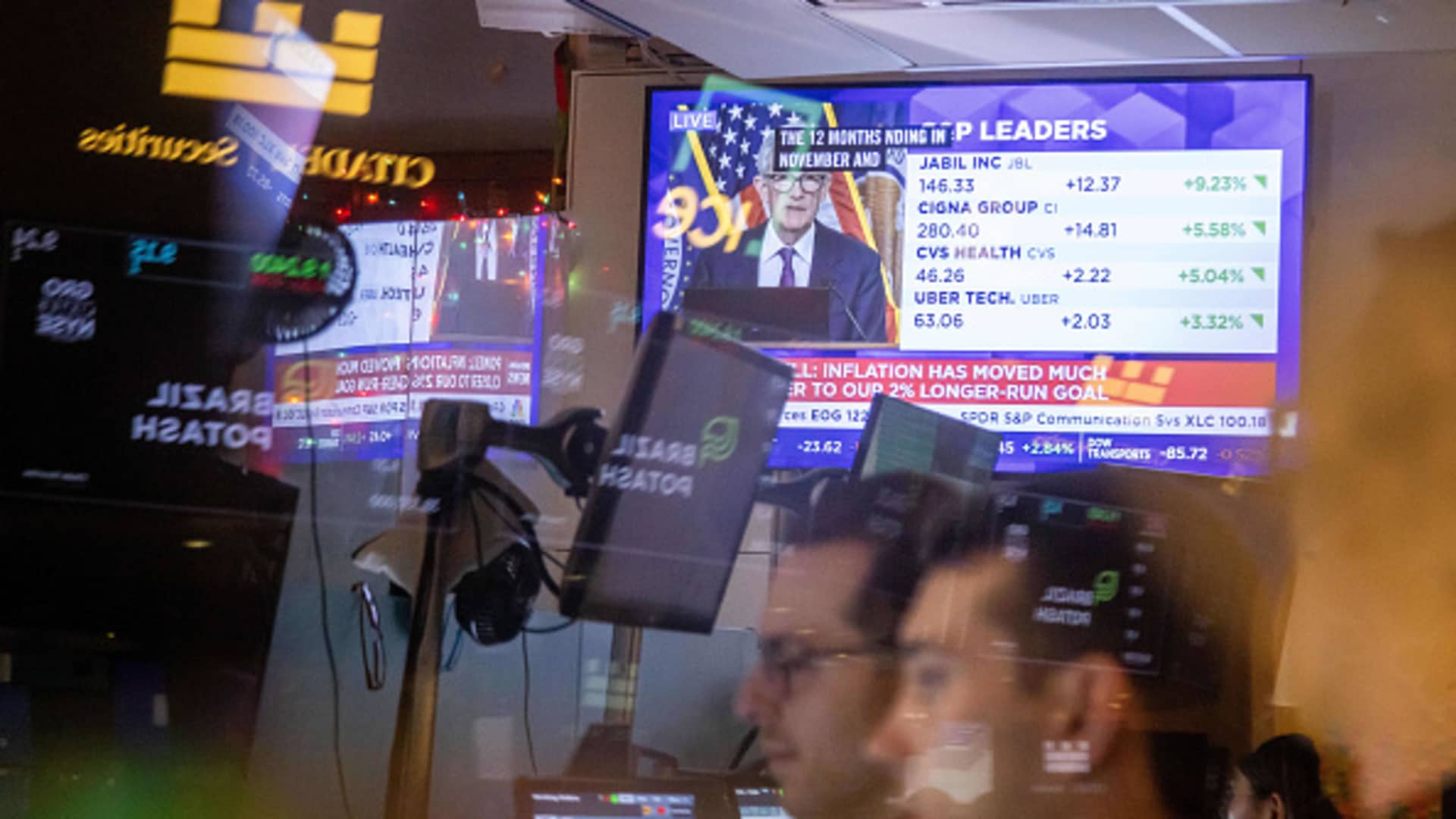Physical Address
304 North Cardinal St.
Dorchester Center, MA 02124
Physical Address
304 North Cardinal St.
Dorchester Center, MA 02124

A television station on the floor of the New York Stock Exchange broadcasts Jerome Powell, chairman of the Federal Reserve of the United States, speaking after a meeting of the Federal Open Market Committee on December 18, 2024.
Michael Nagel | Bloomberg | Getty Images
This report is from today’s CNBC Daily Open, our international markets newsletter. CNBC Daily Open brings investors up to speed on everything they need to know, no matter where they are. Like what you see? You can subscribe here.
The Fed could force the hand of the world’s banks
Wednesday’s indication of the Federal Reserve of the United States that is expecting fewer tax cuts in 2025 than previously projected, sent markets into turmoil and boosted the strength of the dollar. Global central banks insist that their monetary policy is independent of the Fed, but such currency movements could compel them to act.
Markets fall but Dow snaps losing streak
Thursday, the S&P 500 and Nasdaq Composite fell marginally, and the Dow Jones Industrial Average he made a small profit break his losing streak. Asia-Pacific markets down on Friday. Australia S&P/ASX 200 it declined 1.24% to a three-month intraday low before recovering some losses. Chinese and Japanese markets fell on the release of separate economic data from the agencies of the two countries.
Interest rates and inflation updates
The People’s Bank of China on Friday left its lending rates at one and five years unchanged at 3.1% and 3.6%respectively. Meanwhile, Japan’s “core-core” inflation rate, which excludes fresh food and energy – and is tracked by the Bank of Japan – it increased to 2.4% in November. This figure is the highest since April.
Partial shutdown of the US government?
A House Republican bill to fund the government for three months and suspend the debt ceiling for two years failed to pass on Thursday evening. Thirty-eight Republicans joined most Democrats in voting against it dealwhich has been endorsed by US President-elect Donald Trump. Without an agreement and legislation passed, a partial shutdown of the US government will begin late Friday night.
[PRO] A “back up the truck” moment.
The S&P 500 closed flat on Wednesday and continued to fall slightly on Thursday. But this is a “backup the truck” moment, said Tom Lee, head of research at Fundstrat Global Advisors. This suggests that now is, on the contrary, a good time to buy shares. Here are the trends that Lee looks at support his hypothesis.
If we adopt an objective eye, the main benchmarks of the United States did not change much during the trading session on Thursday.
The S&P 500 slipped 0.09% and the Nasdaq Composite declined 0.10%, but the Dow Jones Industrial Average ticked up 0.04%.
But when viewed against the context of Wednesday’s market rout, the direction of those turns also gives an indication, however weak, of the narrative that was driving the markets.
To strengthen the stock market on Thursday in such terms: The shares continue mostly sliding after the Fed unleashed its projections, but the Dow finally broke its losing streak of 10 days.
It’s kind of a mixed bag. Should investors continue to tread carefully due to the downtrend? Or should they see the Dow’s advance as a glimmer of light at the end of the tunnel?
As with all things in the markets, there are no clear answers. The only thing that is more certain is that data points, such as today’s US personal consumption price index for November, will influence the markets more strongly than before.
“Whatever the reaction is, it’s probably going to be more severe one way or another than it would have been before we saw the Fed actually raise those expectations,” said Mike Dickson, head of research and quantitative strategies at Horizon Investments. , refer to the The projection of the Fed that the PCE comes in more than the target of 2% of the central bank.
Indeed, Wall Street’s fear gauge climbed 74% to 27.62 on Wednesday, its the second biggest jump in its history. And even though the VIX dropped by 12.8% on Thursday, it still closed above 20 – a sign of high levels of fear in the market.
It’s a bit ironic, but volatility might be the only thing that’s more certain right now.
— CNBC’s Sarah Min, Sean Conlin, Brian Evans and Pia Singh contributed to this report.